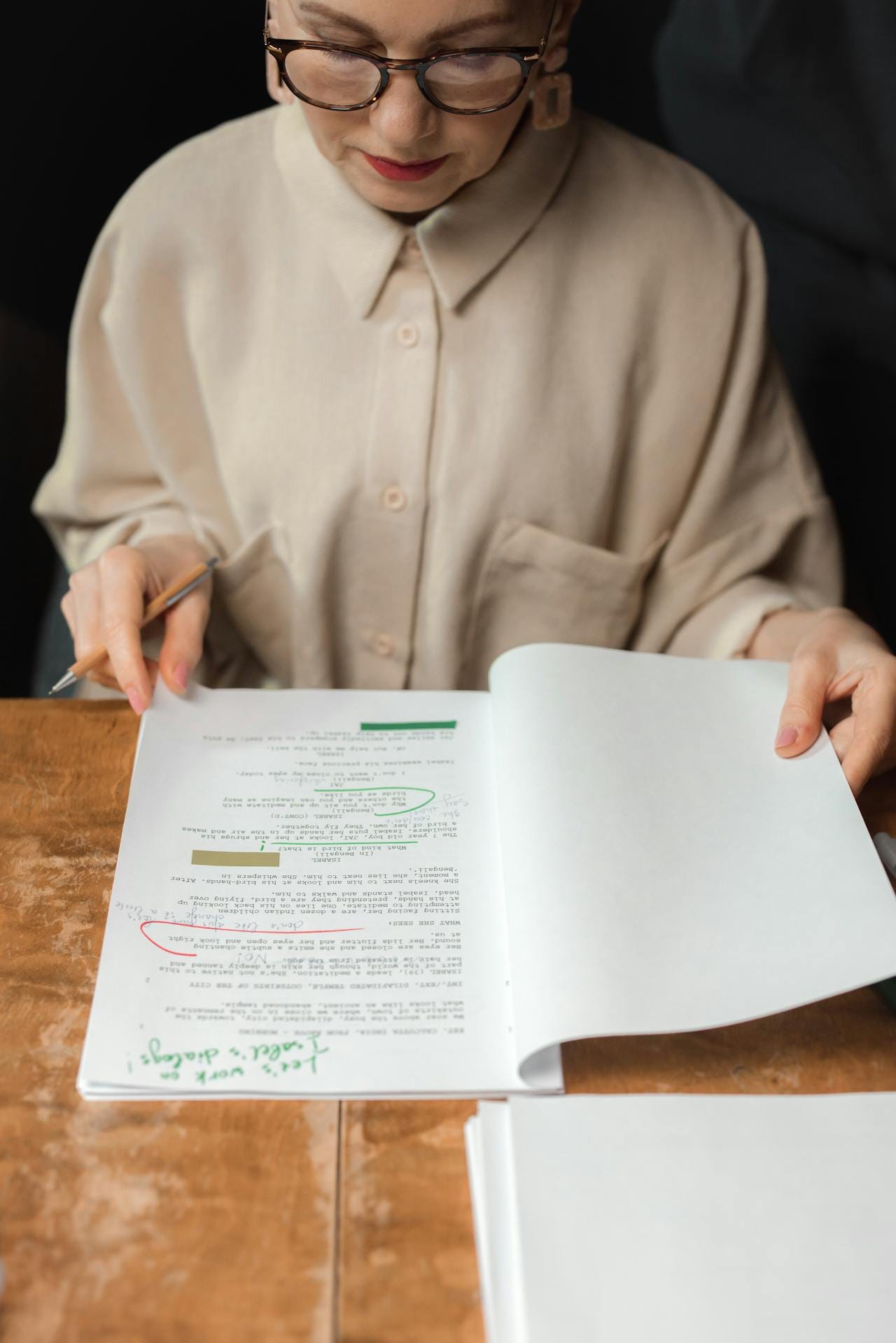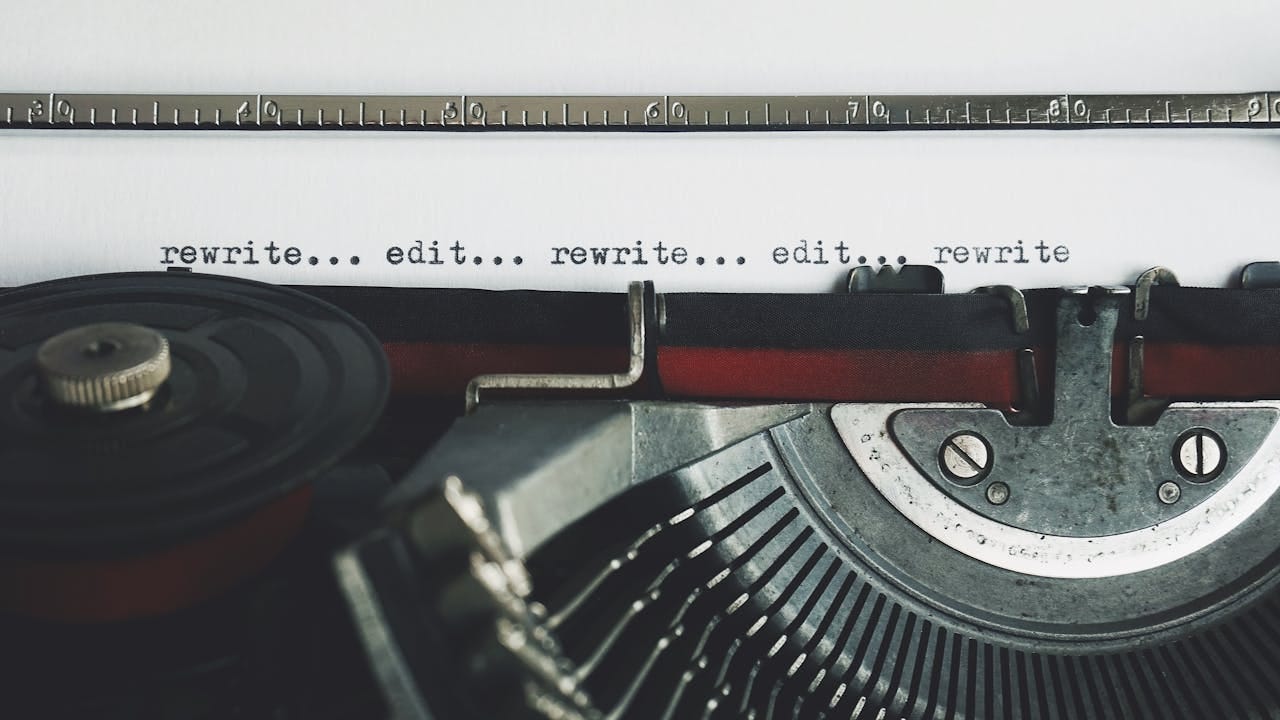How and when to self-edit
There’s a reason they call it a first draft
The secret to good writing is rewriting. You write a first draft, then revise, then revise again. No one, even best-selling authors, produces quality work on the first take.
But just as important as self-editing is timing. When you self-edit matters immensely.
Today I want to share some self-editing tips. What exactly should you be looking for when you read through your first draft? What revisions should you make?
Photo by Ron Lach : https://www.pexels.com/
When to self-edit (hint: later than you think)
But first, I want to talk about when to self-edit. Because timing matters. Self-edit too soon, and you’ll just get stuck.
When you sit down to write, just write. Let the words flow. Just get your ideas down on the page and know that you can rearrange them later. Let them be mediocre or outrageous or tangential.
In my coaching practice, I often remind writers—just write a shitty first draft (As Anne Lamott would say. If you’ve not read her book Bird by Bird you need to buy a copy right now!)
Don’t write three sentences and then go back and “fix it”—unless you want to spend your day obsessing over those three sentences. When you sit down to write, decide ahead of time to write a draft. Set a goal: word counts work best. Remind yourself it’s not a second or third draft, but the first. It’s allowed to be imperfect.
Write a chapter or a section of your book. Write a whole blog post or newsletter. Write 1000 (or 5000) words or whatever. Decide ahead of time how much you’re going to write and just get it down without making corrections. Then set it aside. Go for a walk or do 10 minutes of yoga or make a cup of tea.
Mary DeMuth, an author and agent who has written more than 40 books, writes an entire draft of a book, 50,000 words, over the course of a couple months (sometimes less). She doesn’t self-edit until she’s got a full-length manuscript. I don’t know, 40 books—that’s pretty damn productive, right? (Read this inspiring interview with Mary for more on that.)
She’s a meticulous self-editor: but not while she’s writing that first draft.
If you try to self-edit too soon, three things happen:
you write less because you lose momentum
writing becomes painful instead of joyful
the quality of your second draft suffers
When you write a first draft first, then step away, your subconscious mind is sorting out your ideas, getting some mental rest. When you come back later, you’ve had some time. You’re not as close to the work and can revise more objectively. The rest period between first draft and revision improves the quality. It’s like letting bread dough rise.
If you try to fix things as you go you along, you’ll end up telling yourself, “this is terrible I can’t write, why even try, this is awful.” If you write a shitty first draft on purpose, you can have this conversation in your head instead: “I’m so productive. Look at me writing and filling the page with ideas. Let’s write a sentence, then another one. I am just getting all the raw materials on the page and I’m really good at writing bad first drafts.” Embrace a childlike wonder and joy in just writing. Make yourself write one bad sentence at a time, and miraculously, there will be nuggets of gold among the muck.
So, write your first draft. Give it some time, then go back and self-edit. (That’s where you find those nuggets, brush off the detritus, and polish them til they gleam.)
So that’s the when: not right away.
How long to wait? I meet with my coaching clients once a month. I suggest they work on their draft every day for two weeks, then let it sit for a weekend. Then go through and self-edit a little bit each day for a week. They send it to me and I review it, send it back with my comments, then a week later, we meet to discuss.
Because they don’t send me a rough draft, they can get feedback on problems they have already noticed when self-editing. It makes our coaching sessions more productive.
Also, people sign up for coaching with me because I hold them accountable to writing 5000 words per month. If they self-edit too soon, they won’t hit that goal.
How to self-edit
Now for the how. What exactly are you looking for when you revise? You read through your manuscript with fresh eyes, carefully reading each sentence, and add or subtract whatever is needed. Here’s a partial checklist of what to look for.
Photo by Suzy Hazelwood: https://www.pexels.com/
In my work as an editor and coach, I tell my clients: start by reading your draft out loud. Not just whispering it to yourself. Read it out loud as if you’re rehearsing a speech. You’ll catch awkward phrasing and repeated words, or things that just aren’t clear. Beyond that, here are some of the most common mistakes that I see writers make:
Wordiness. Read each sentence out loud. Can you say it more succinctly? More clearly? Do you repeat yourself or use five words to express what you could say in two?
Verbs:
Do you slip into the passive voice instead of the active voice? “The hat was purchased by Jane.” (passive) becomes “Jane purchased the hat.” (active)
Are you relying on “was, were, are, is” (to be verbs) instead of stronger, more active verbs? (these often accompany passive voice, see example above)
Is your writing littered with too many –ing verbs? (These often accompany “to be” verbs: “Jane was walking” is revised as “Jane walked”) Ferret out the –ing verbs and you’ll often find passive verbs with them.
Are you consistent with verb tense, or do you toggle back and forth between present and past tense? Like this: “Jane is walking down the street and goes into a store. She purchased a hat.” (Is and goes are present tense, purchased is past tense.) Consistent tense would revise: “Jane walked down the street, then entered a store, where she purchased a hat.” (You’d be amazed at how often this problem crops up.)
Adverbs:
Do you have too many adverbs? (words that describe a verb and typically end in -ly, like “slowly, carefully, quickly.”)
Can you replace them with strong verbs? For example: “Jane walked slowly along the street.” could be edited to read: “Jane meandered along the street.”
Adjectives: have you overused adjectives? Adding too many descriptors slows the pace of your writing and might make it too flowery.
Pet words: all writers have them—words they use far too often. If you find a section in your draft where a word is repeated, try to rewrite using synonyms, or different phrasing.
Run on sentences: do you try to cram too many unrelated ideas into one sentence? Do you overuse the word “and” when perhaps you should just put a period and start a new sentence? Do your sentences include redundancy or unnecessary details?
Punctuation, grammar, spelling: When we write a quick first draft, we might leave out punctuation, misspell words, or make grammatical errors. That’s okay. But self-editing means looking for those small but crucial mistakes and cleaning up our writing.
I said I was going to give you the when and how of self-editing. But one question remains: why? You may be asking: if I’m going to hire an editor, why self-edit?
Because you want your writing to be good, right? You want it to be as refined and polished as possible. If you can at least sand off the rough edges, a trained editor will then take your writing to the next level.
Also, self-editing makes you a better writer. Self-editing is self-education. By correcting your own mistakes, you strengthen your skills. Any piece of good writing goes through multiple revisions on its way to becoming good. Put in the work of self-editing and you’ll become a better writer.
Interested in working with me as a coach? Click the button below to get in touch and we’ll set up a free half hour consultation.
If you found today’s newsletter helpful, please give us a like or comment, or better yet, share it with a friend!




Excellent teaching - thank you.
Well done...and so true. Writing with this approach is actually a luxury, given my background in news writing, where writers are under constant deadline pressure: no time for letting words get cold, there's a deadline in 10 minutes. Now, I'm writing blogs a few hundred words at a time, letting them get cold for a day or two, then rewriting or editing with fresh eyes and less in love with my prose. Thanks!